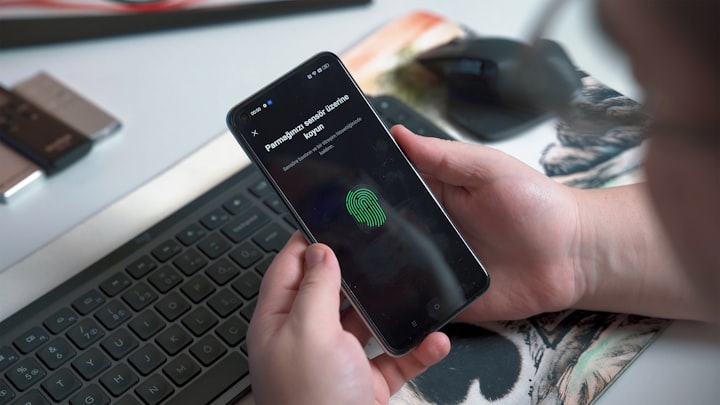Cyber Threat Hunting
Proactively Detecting Intrusions
Cyber Threat Hunting: Proactively Detecting Intrusions
1. Introduction to Cyber Threat Hunting:
Cyber threat hunting is a proactive approach to cybersecurity that focuses on actively searching for signs of cyber threats and intrusions within an organization's network. It involves analyzing network data, logs, and other indicators to identify potential threats that may have bypassed traditional security measures.
2. Complementing Traditional Security Measures:
Cyber threat hunting complements traditional security measures such as firewalls, antivirus software, and intrusion detection systems. While these tools are crucial for network defense, threat hunting adds an extra layer of protection by actively seeking out and mitigating threats that may have evaded initial detection.
3. Proactive Defense:
Unlike reactive approaches that rely solely on incident response, cyber threat hunting takes a proactive stance by actively seeking out potential threats before they can cause significant damage. It focuses on early detection, mitigation, and prevention of advanced persistent threats (APTs) and other sophisticated attacks.
4. Human Expertise and Advanced Tools:
Cyber threat hunting requires the expertise of skilled analysts who possess in-depth knowledge of various attack techniques and tactics used by threat actors. These analysts leverage advanced tools and technologies to conduct thorough investigations and identify anomalous behaviors and indicators of compromise.
5. Data Analysis and Hunting Techniques:
Cyber threat hunting involves analyzing vast amounts of network data and logs to uncover hidden threats. Analysts use various hunting techniques, such as anomaly detection, behavioral analysis, correlation analysis, and threat intelligence integration, to identify and track potential threats.
6. Threat Hunting Lifecycle:
The process of cyber threat hunting typically follows a lifecycle approach, starting with hypothesis generation, followed by data collection, analysis, investigation, and remediation. It is an iterative process that requires continuous monitoring and improvement to stay ahead of evolving threats.
7. Collaboration and Information Sharing:
Cyber threat hunting encourages collaboration and information sharing between organizations, security teams, and threat intelligence providers. Sharing insights, indicators of compromise, and threat intelligence helps collectively defend against cyber threats and strengthens the overall security posture.
8. Hunting for Advanced Threats:
Cyber threat hunting focuses on detecting advanced threats that may have bypassed traditional security controls. These threats often employ sophisticated techniques, such as zero-day exploits, lateral movement, and obfuscation, making them difficult to detect through conventional means.
9. Enhanced Incident Response:
By proactively detecting threats, cyber threat hunting enhances incident response capabilities. It enables security teams to respond swiftly and effectively to mitigate the impact of an attack, minimize downtime, and prevent further compromise.
10. Threat Intelligence Integration:
Cyber threat hunting leverages threat intelligence feeds and data from external sources to enrich the analysis and detection process. By incorporating up-to-date information about known threat actors, indicators of compromise, and emerging attack techniques, organizations can better identify and mitigate potential threats.
11. Continuous Monitoring:
Cyber threat hunting involves continuous monitoring of network traffic, logs, and system activities to identify abnormal or suspicious behaviors. This allows security teams to detect and respond to threats in real-time, reducing the dwell time of attackers within the network.
12. Machine Learning and Automation:
Advancements in machine learning and automation have enabled the development of tools and algorithms that assist in cyber threat hunting. These technologies can help analyze vast amounts of data, detect patterns, and flag potential threats, augmenting the capabilities of human analysts.
13. Threat Hunting as a Service:
Some organizations opt to outsource cyber threat hunting to specialized service providers. Threat hunting as a service (THaaS) offers the expertise and tools needed to proactively detect threats, allowing organizations to focus on their core operations while benefiting from specialized threat hunting capabilities.
14. Metrics and Performance Measurement:
To gauge the effectiveness of cyber threat hunting efforts, organizations establish metrics and performance indicators. These metrics may include the number of
threats detected, average detection and response times, and the impact of detected threats on the organization's overall security posture.
15. Continuous Improvement:
Cyber threat hunting is an evolving discipline that requires continuous improvement and adaptation to changing threat landscapes. It involves staying up to date with the latest attack techniques, investing in training and skill development, and regularly reassessing and refining hunting strategies and methodologies.
In conclusion, cyber threat hunting plays a vital role in proactively detecting and mitigating cyber threats that may have evaded traditional security measures. By leveraging human expertise, advanced tools, and continuous monitoring, organizations can enhance their overall security posture, detect threats earlier, and effectively respond to potential breaches.
About the Creator
Abdullahi Mustapha
Abdullahi: Skilled forex trader with 3 years' experience. Amazon KDP expert and programmer. Pursuing a diploma in computer science. Youthful, yet wise. Passionate about technology and finance. Ready to make an impact in forex,







Comments
There are no comments for this story
Be the first to respond and start the conversation.